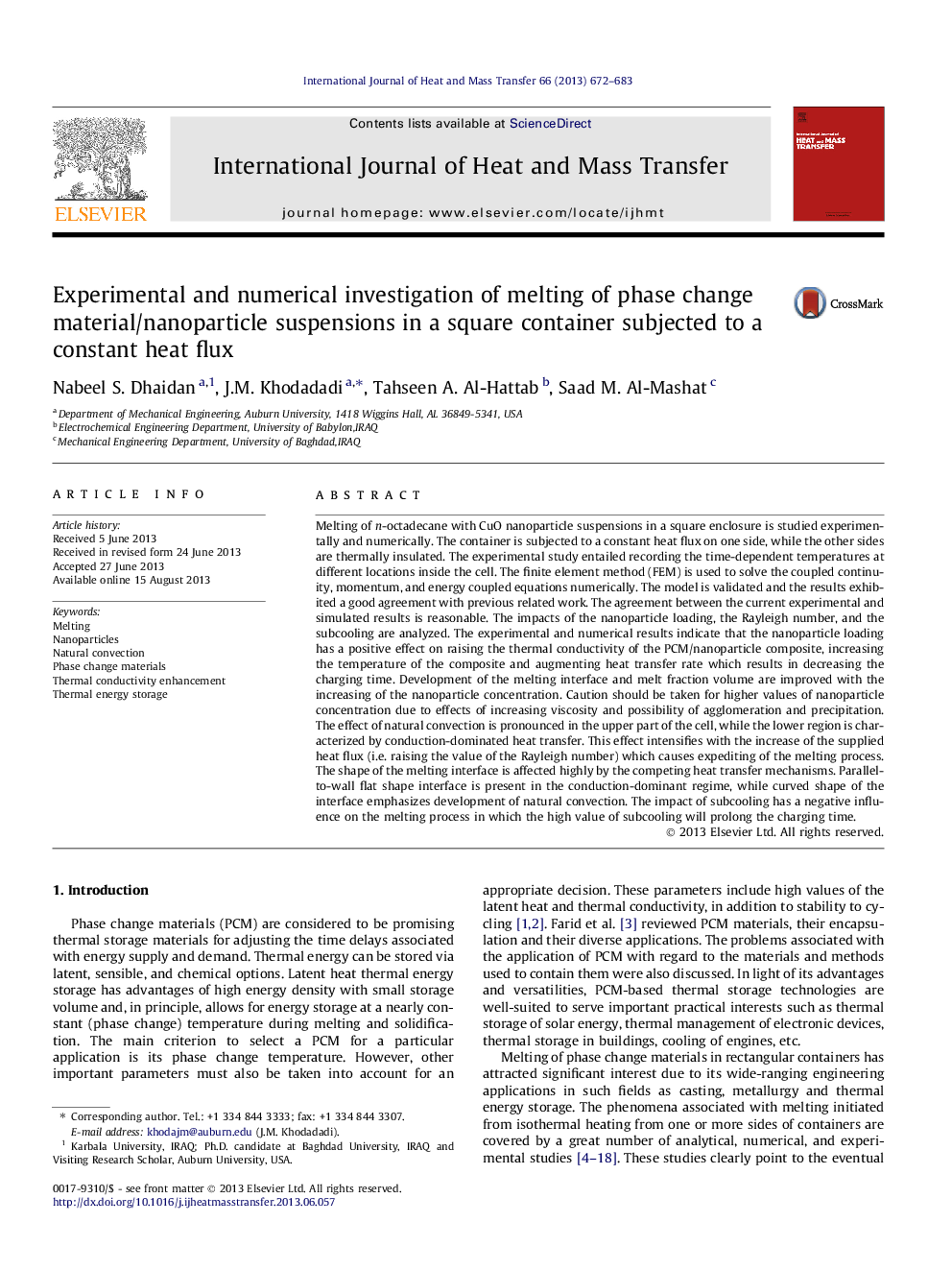| Article ID | Journal | Published Year | Pages | File Type |
|---|---|---|---|---|
| 7058165 | International Journal of Heat and Mass Transfer | 2013 | 12 Pages |
Abstract
Melting of n-octadecane with CuO nanoparticle suspensions in a square enclosure is studied experimentally and numerically. The container is subjected to a constant heat flux on one side, while the other sides are thermally insulated. The experimental study entailed recording the time-dependent temperatures at different locations inside the cell. The finite element method (FEM) is used to solve the coupled continuity, momentum, and energy coupled equations numerically. The model is validated and the results exhibited a good agreement with previous related work. The agreement between the current experimental and simulated results is reasonable. The impacts of the nanoparticle loading, the Rayleigh number, and the subcooling are analyzed. The experimental and numerical results indicate that the nanoparticle loading has a positive effect on raising the thermal conductivity of the PCM/nanoparticle composite, increasing the temperature of the composite and augmenting heat transfer rate which results in decreasing the charging time. Development of the melting interface and melt fraction volume are improved with the increasing of the nanoparticle concentration. Caution should be taken for higher values of nanoparticle concentration due to effects of increasing viscosity and possibility of agglomeration and precipitation. The effect of natural convection is pronounced in the upper part of the cell, while the lower region is characterized by conduction-dominated heat transfer. This effect intensifies with the increase of the supplied heat flux (i.e. raising the value of the Rayleigh number) which causes expediting of the melting process. The shape of the melting interface is affected highly by the competing heat transfer mechanisms. Parallel-to-wall flat shape interface is present in the conduction-dominant regime, while curved shape of the interface emphasizes development of natural convection. The impact of subcooling has a negative influence on the melting process in which the high value of subcooling will prolong the charging time.
Keywords
Related Topics
Physical Sciences and Engineering
Chemical Engineering
Fluid Flow and Transfer Processes
Authors
Nabeel S. Dhaidan, J.M. Khodadadi, Tahseen A. Al-Hattab, Saad M. Al-Mashat,
